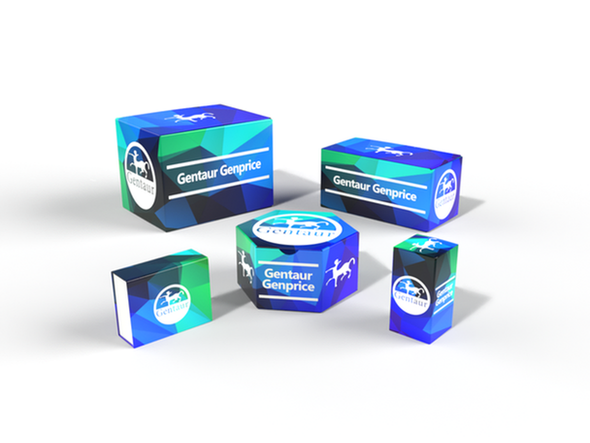Description
RGP1 Antibody | 4569 | Gentaur UK, US & Europe Distribution
Host: Rabbit
Reactivity: Human, Mouse, Rat
Homology: Predicted species reactivity based on immunogen sequence: Bovine: (94%)
Immunogen: RGP1 antibody was raised against a 17 amino acid synthetic peptide near the amino terminus of the human RGP1.
The immunogen is located within amino acids 50 - 100 of RGP1.
Research Area: Homeostasis
Tested Application: E, WB
Application: RGP1 antibody can be used for detection of RGP1 by Western blot at 1 - 2 μg/mL.
Antibody validated: Western Blot in human samples. All other applications and species not yet tested.
Specificiy: N/A
Positive Control 1: Cat. No. 1301 - Human Heart Tissue Lysate
Positive Control 2: N/A
Positive Control 3: N/A
Positive Control 4: N/A
Positive Control 5: N/A
Positive Control 6: N/A
Molecular Weight: N/A
Validation: N/A
Isoform: N/A
Purification: RGP1 Antibody is affinity chromatography purified via peptide column.
Clonality: Polyclonal
Clone: N/A
Isotype: IgG
Conjugate: Unconjugated
Physical State: Liquid
Buffer: RGP1 Antibody is supplied in PBS containing 0.02% sodium azide.
Concentration: 1 mg/mL
Storage Condition: RGP1 antibody can be stored at 4˚C for three months and -20˚C, stable for up to one year. As with all antibodies care should be taken to avoid repeated freeze thaw cycles. Antibodies should not be exposed to prolonged high temperatures.
Alternate Name: RGP1 Antibody: KIAA0258, KIAA0258, Retrograde Golgi transport protein RGP1 homolog
User Note: Optimal dilutions for each application to be determined by the researcher.
BACKGROUND: RGP1 Antibody: Retrograde golgi transport homolog 1 (RGP1) is the mammalian homolog to the yeast RGP1, a protein that forms a tight complex with RIC1. This complex binds Ypt6p and stimulates guanine nucleotide exchange. RGP1 is localized to the Golgi and is thought to be a potential Golgi recycling factor. Rgp1 yeast mutants exhibit defects in retrograde trafficking similar to those seen in yeast with mutations in other retrograde Golgi transport proteins. It is expected that RGP1 plays a similar role in mammalian cells to that seen in yeast.






